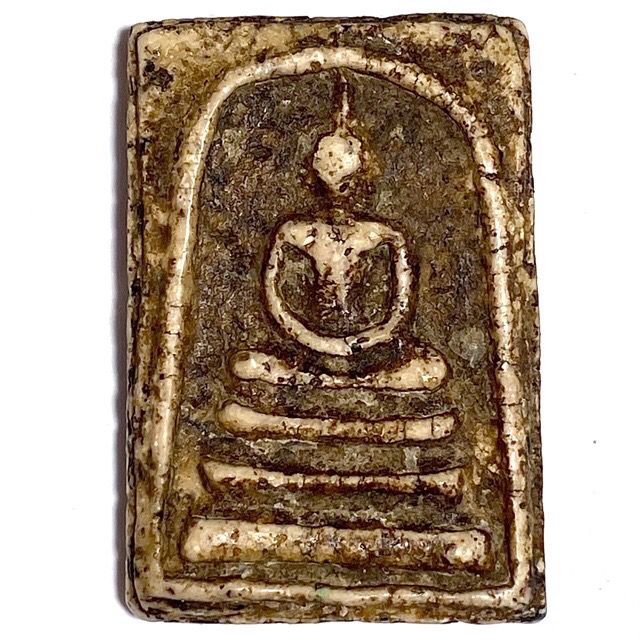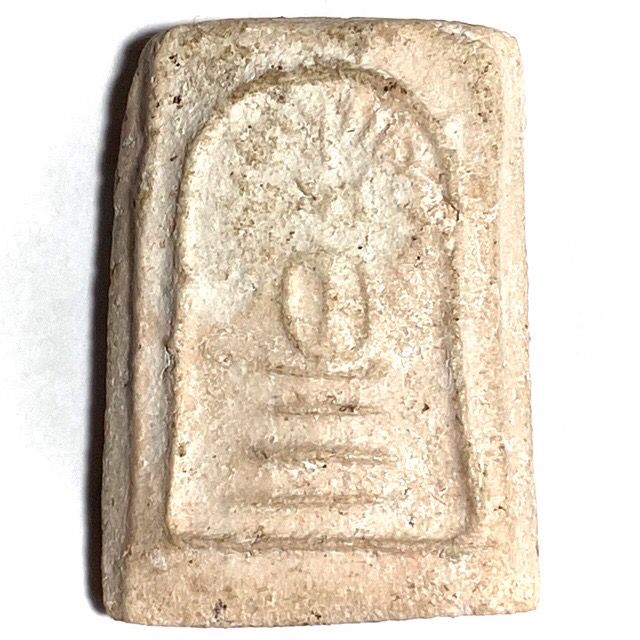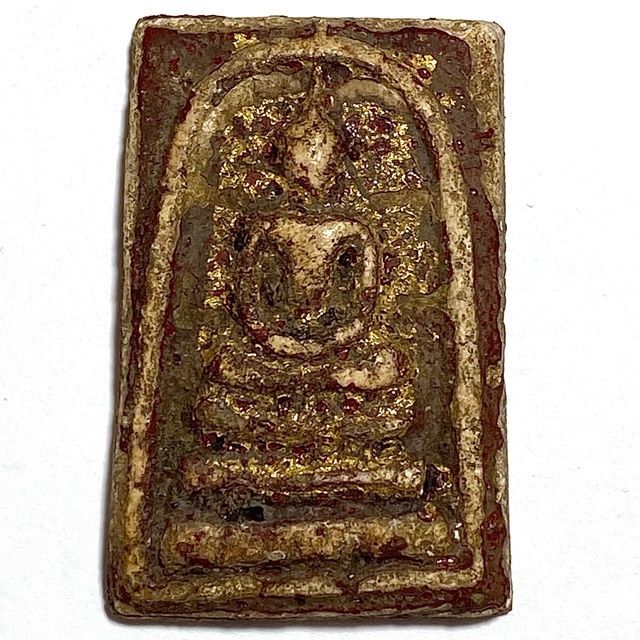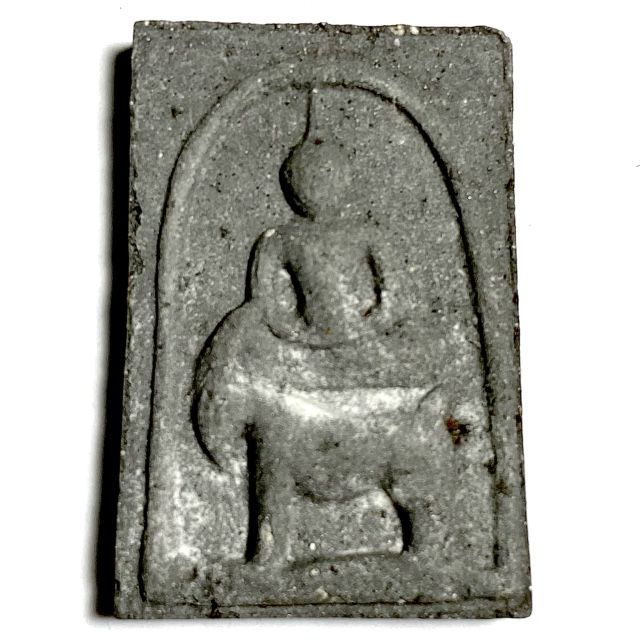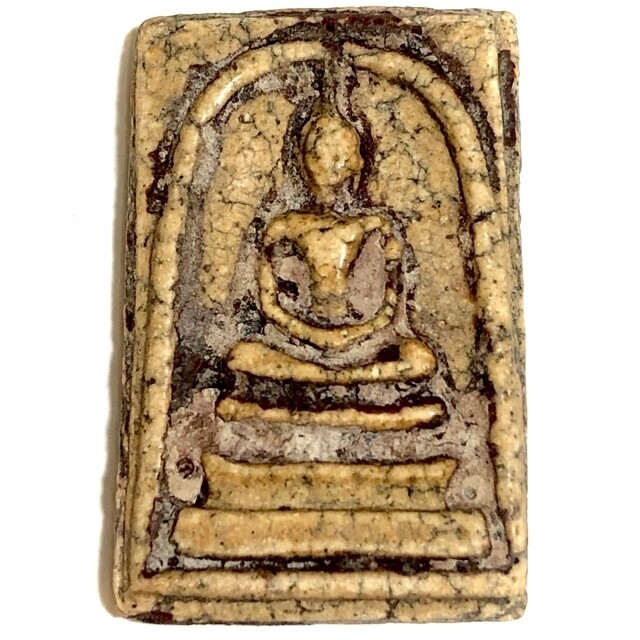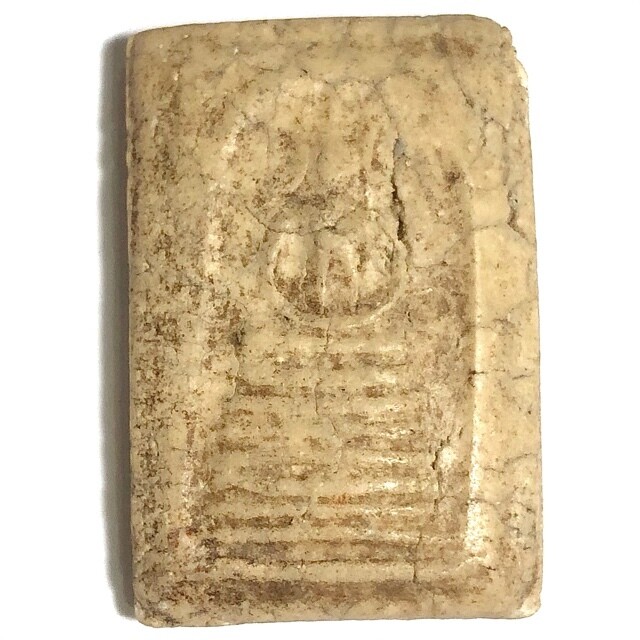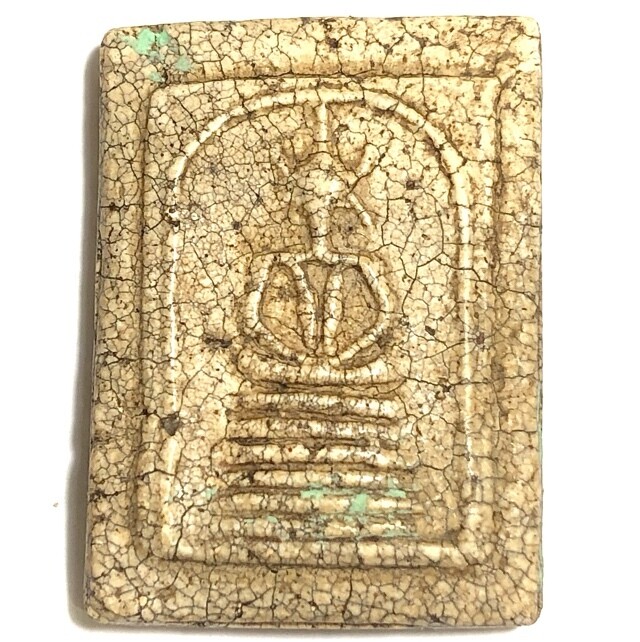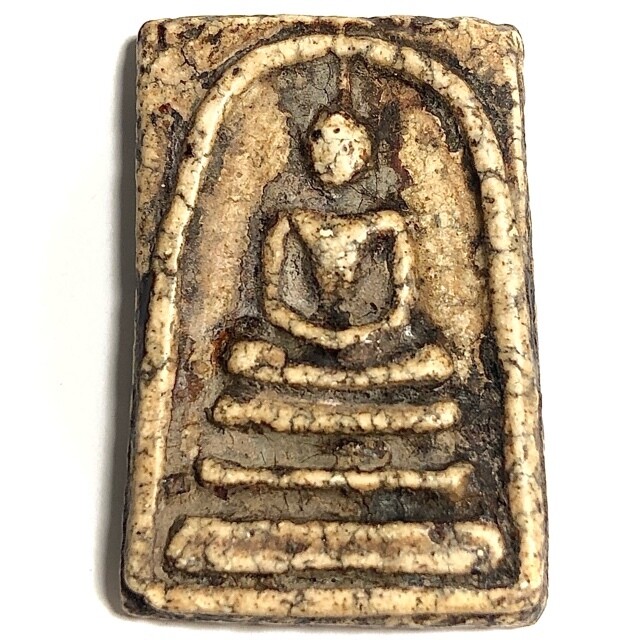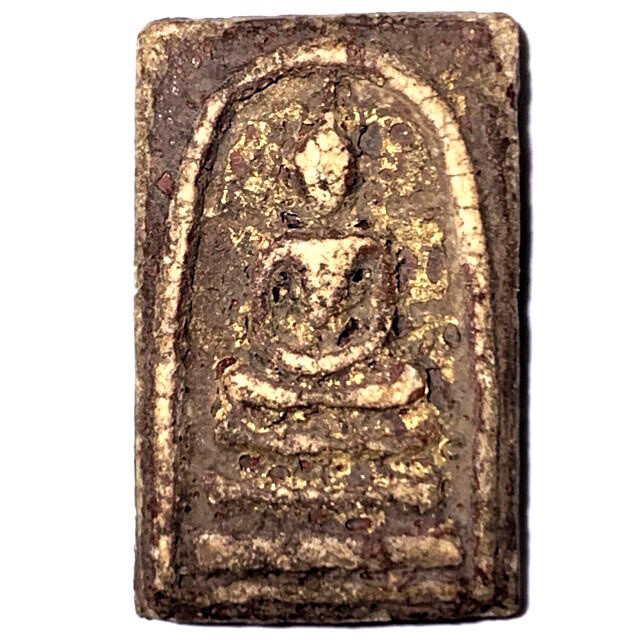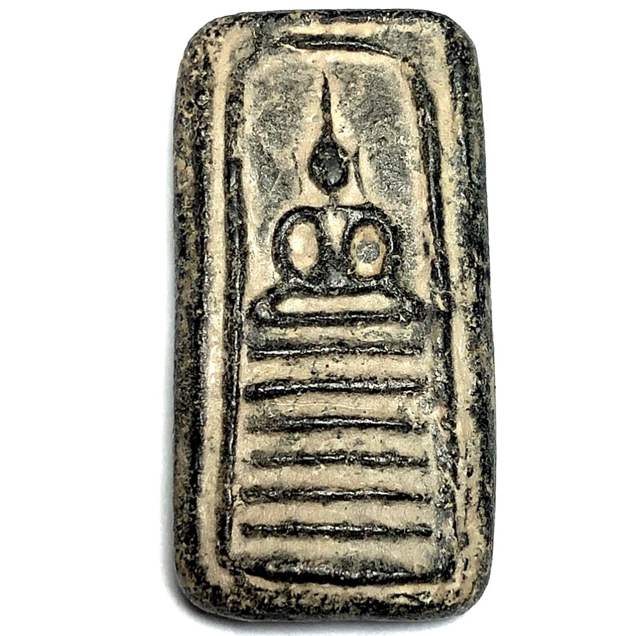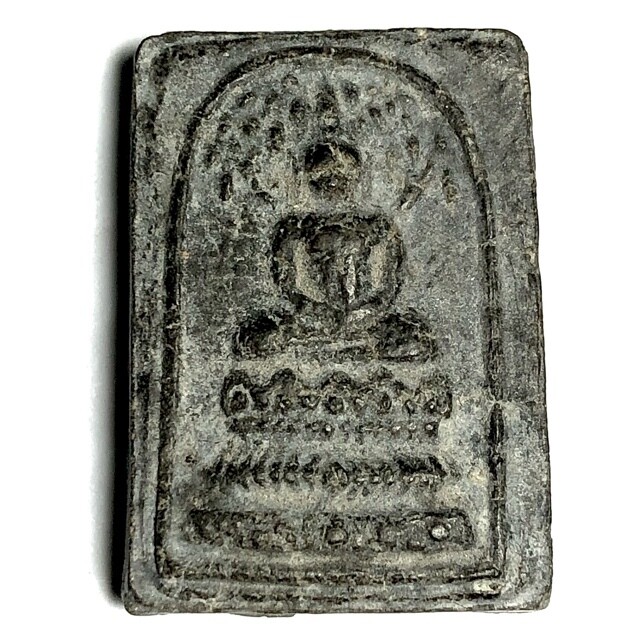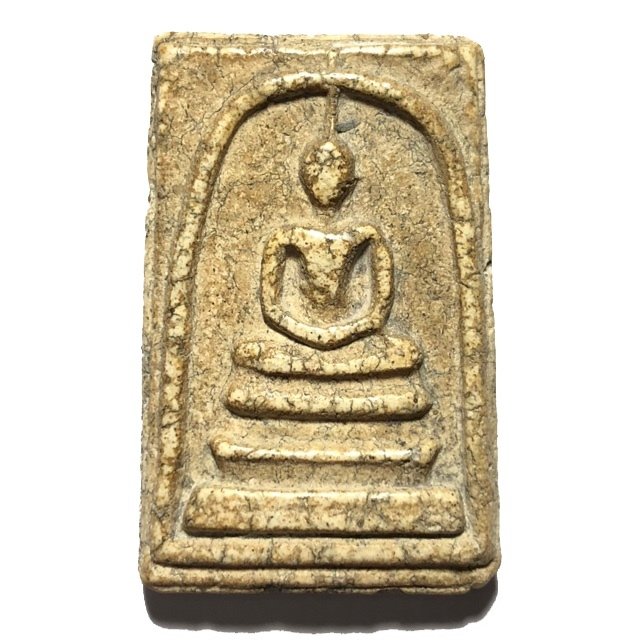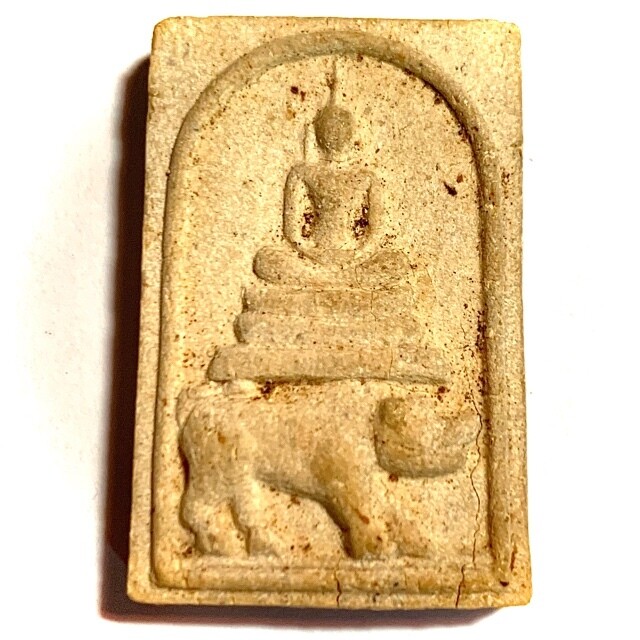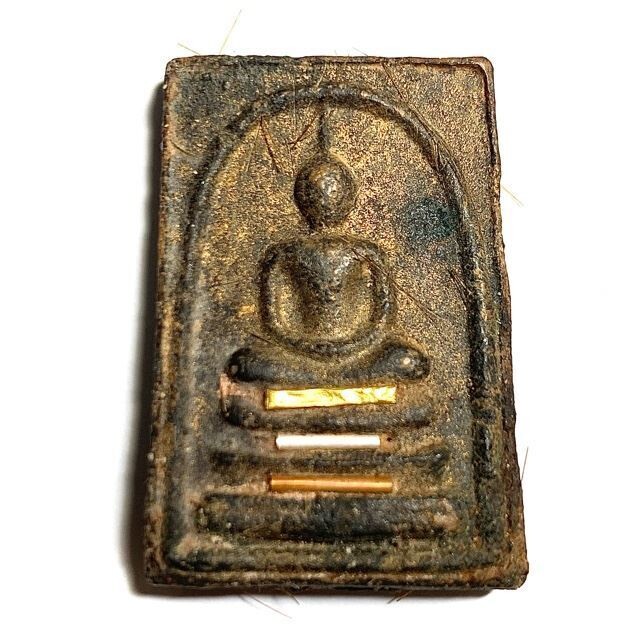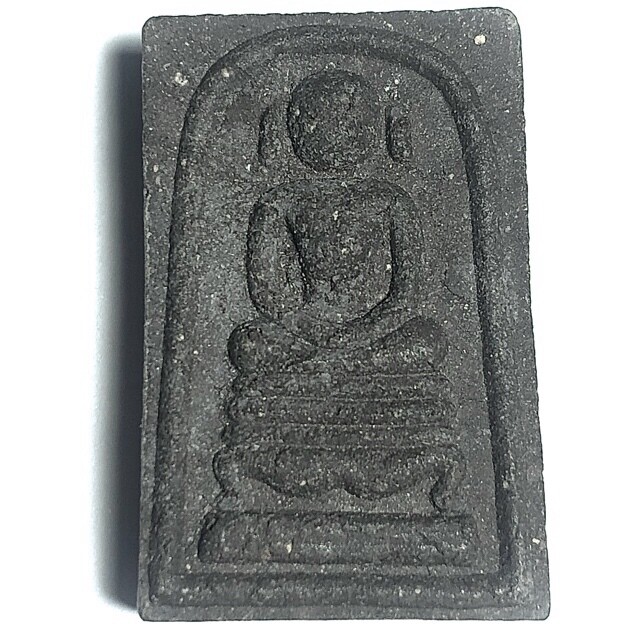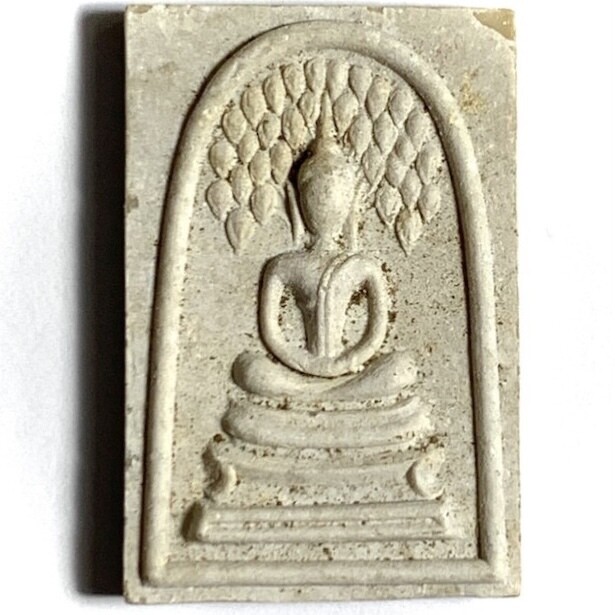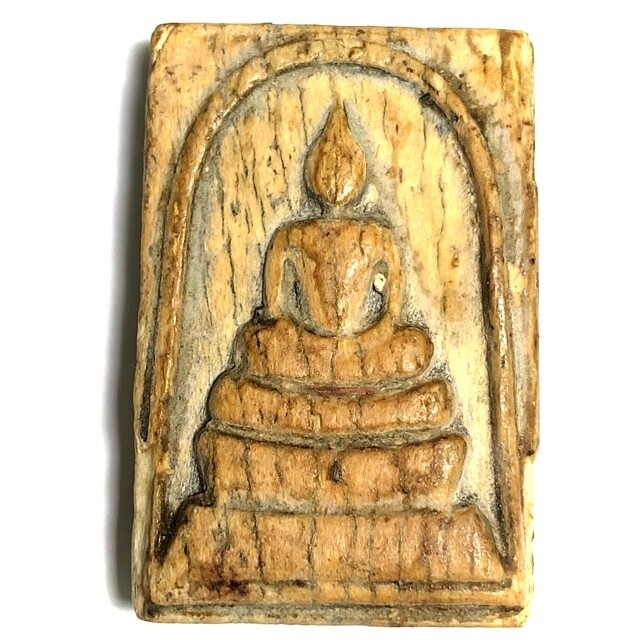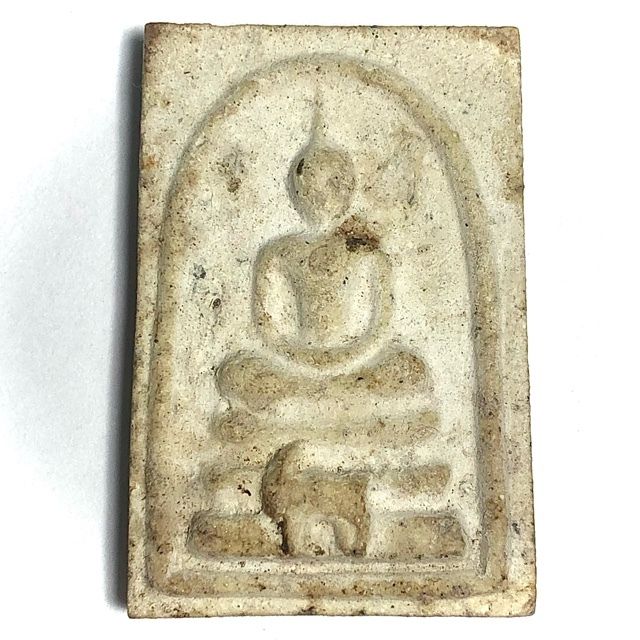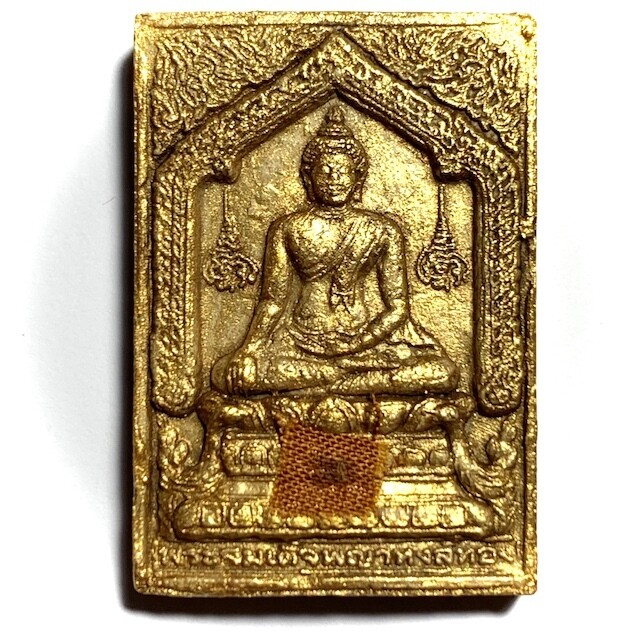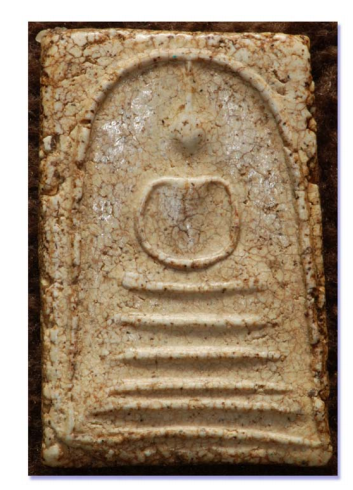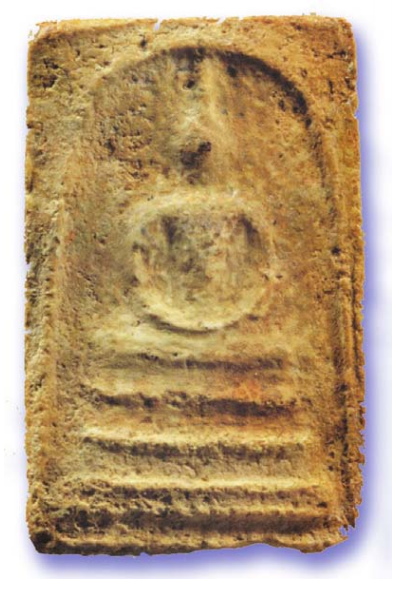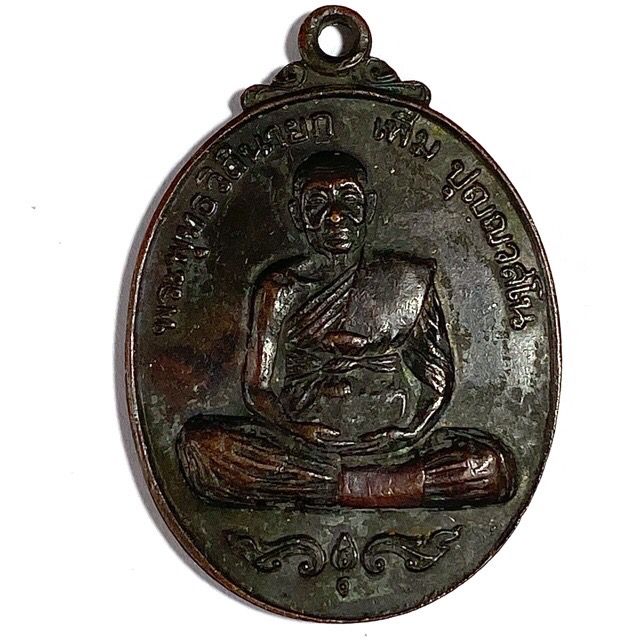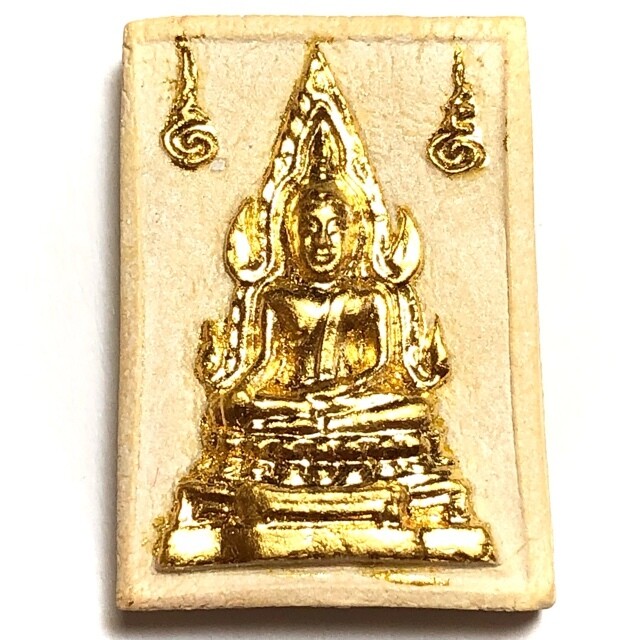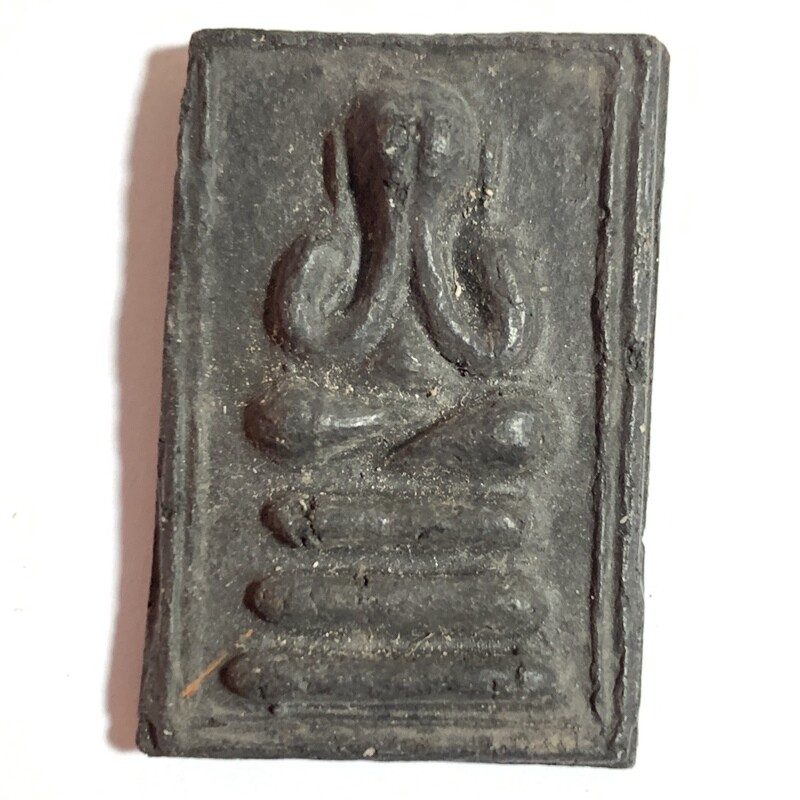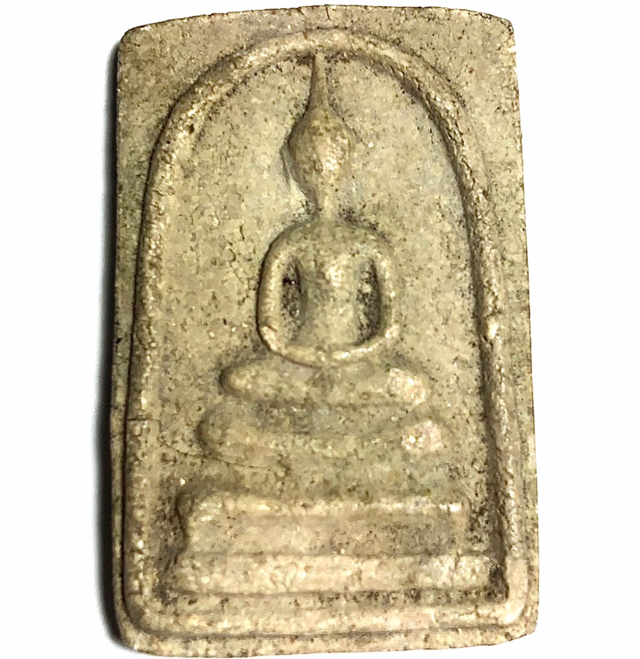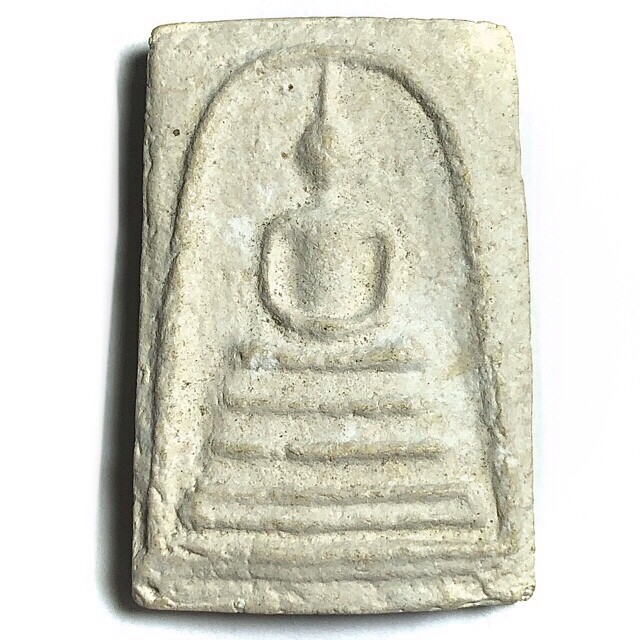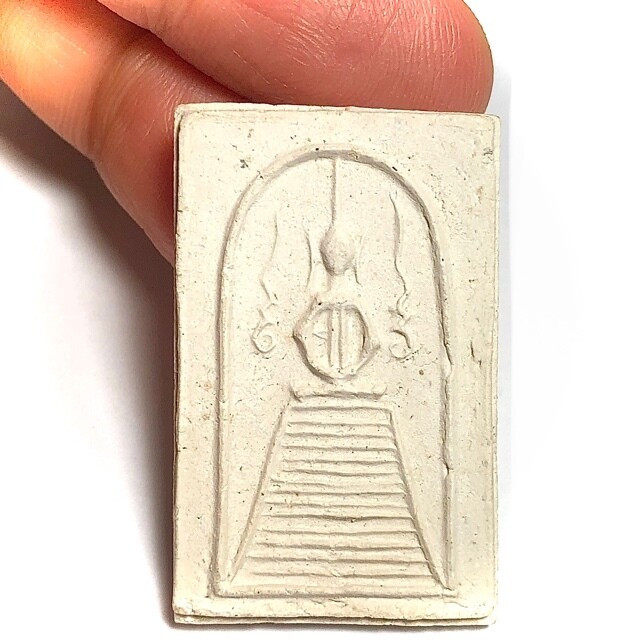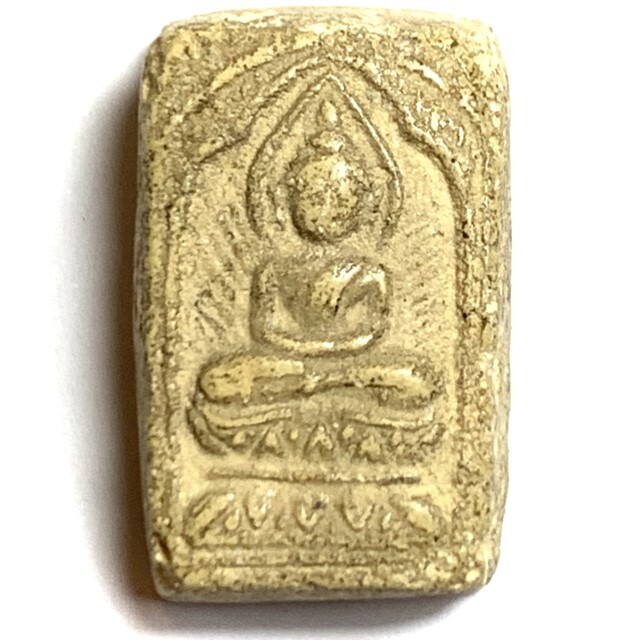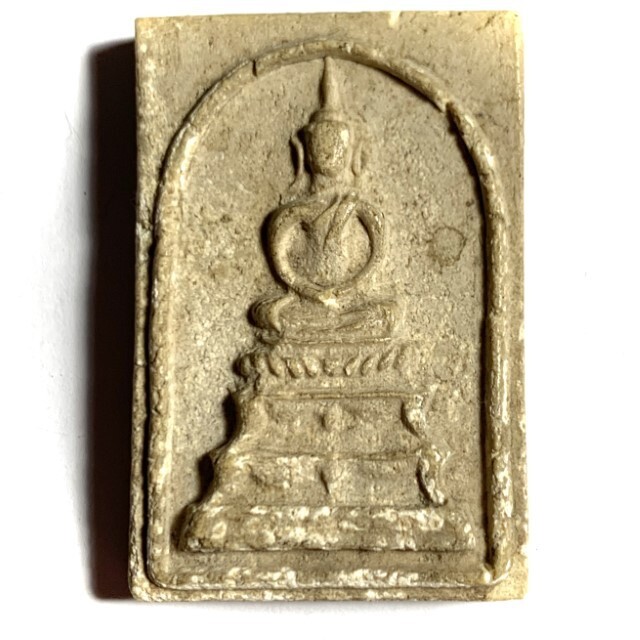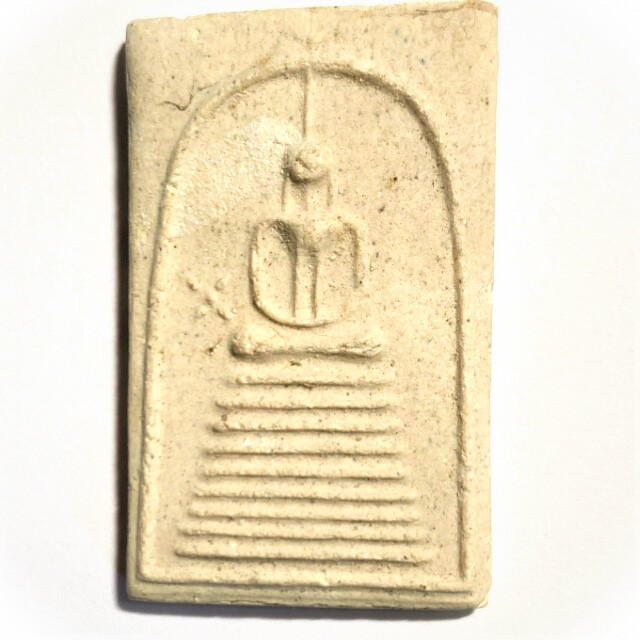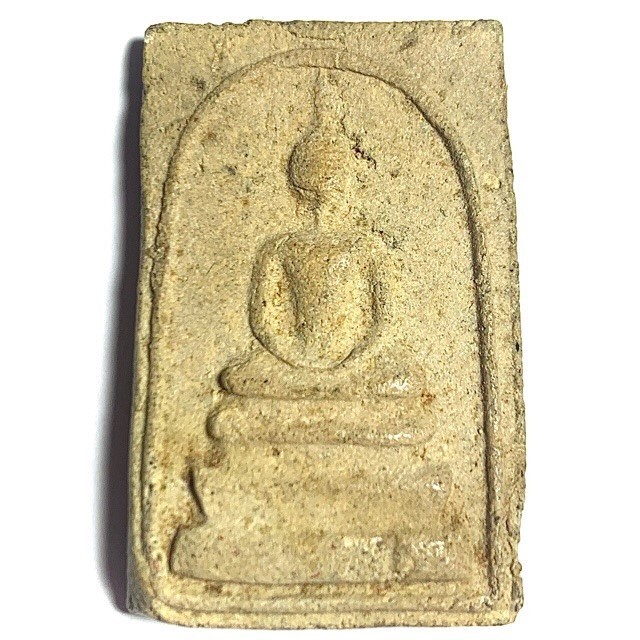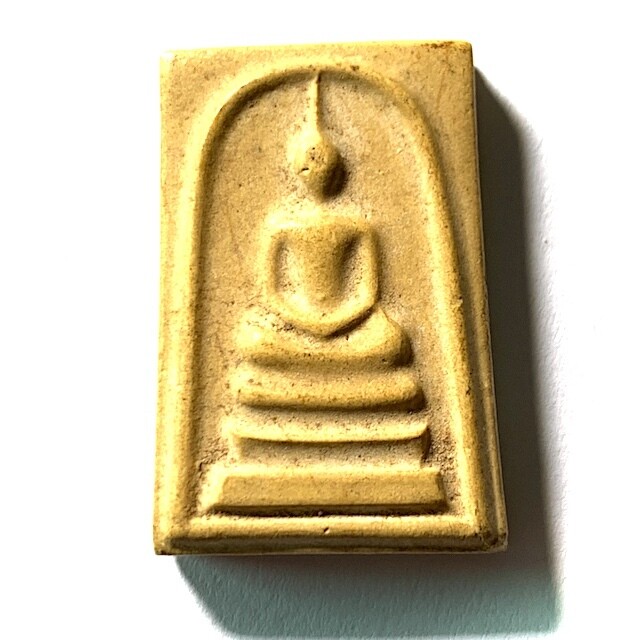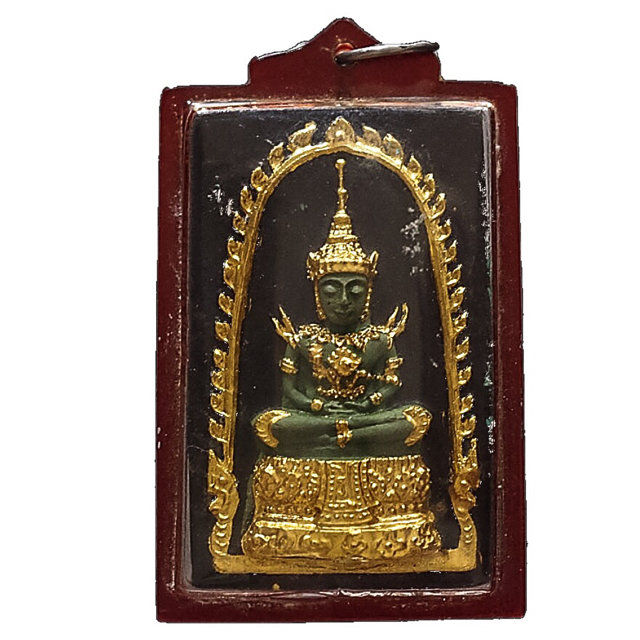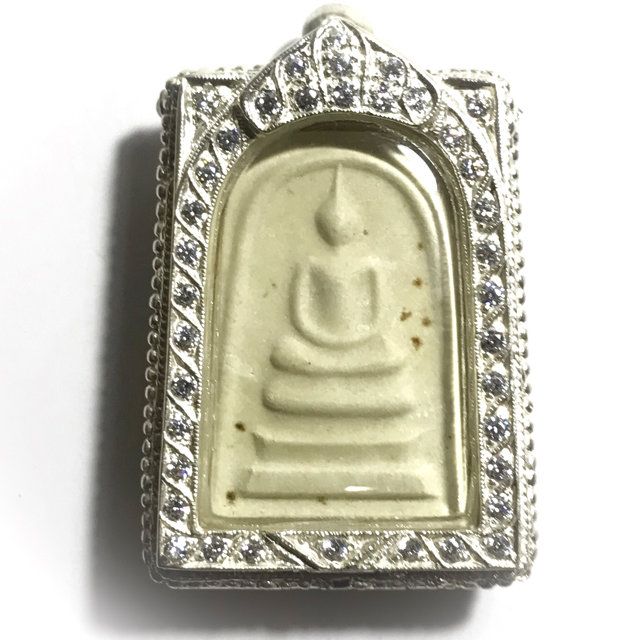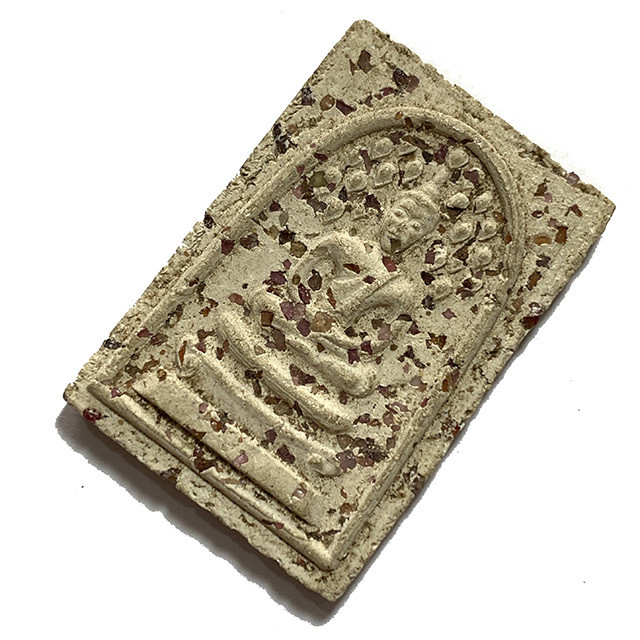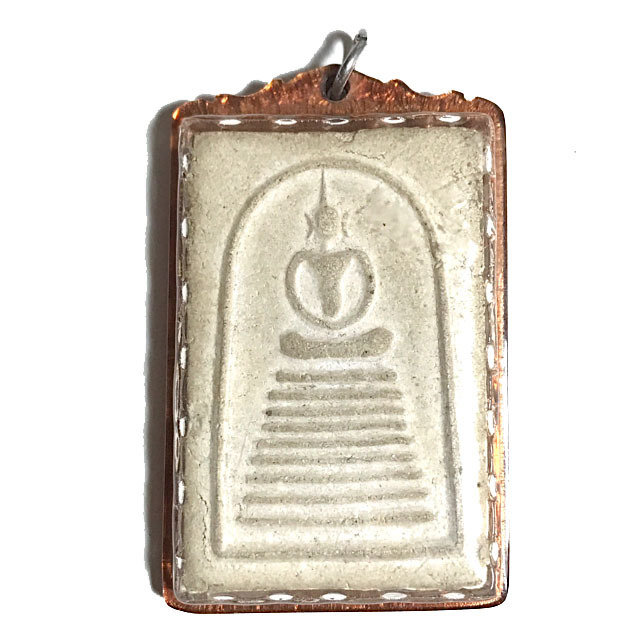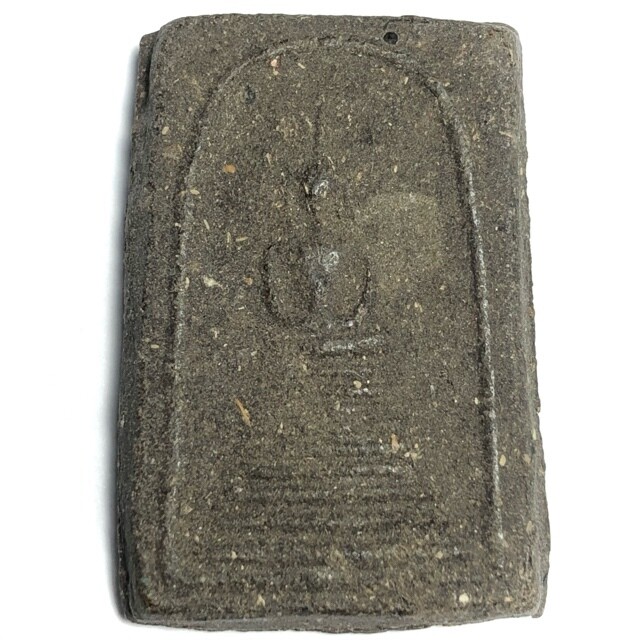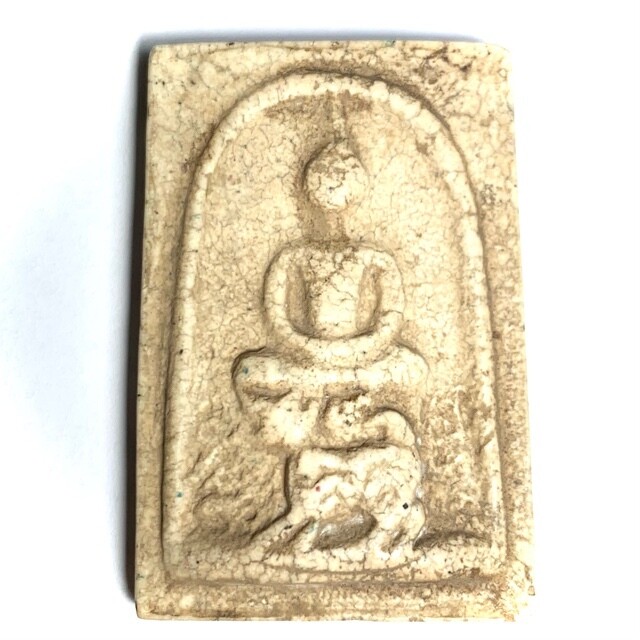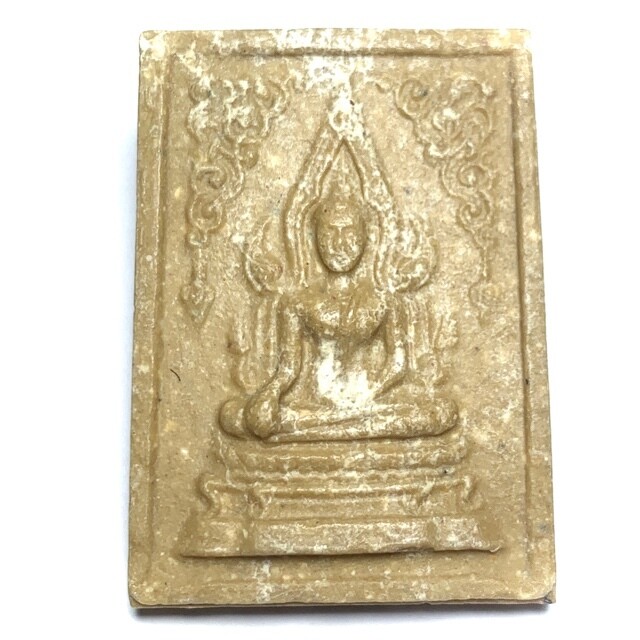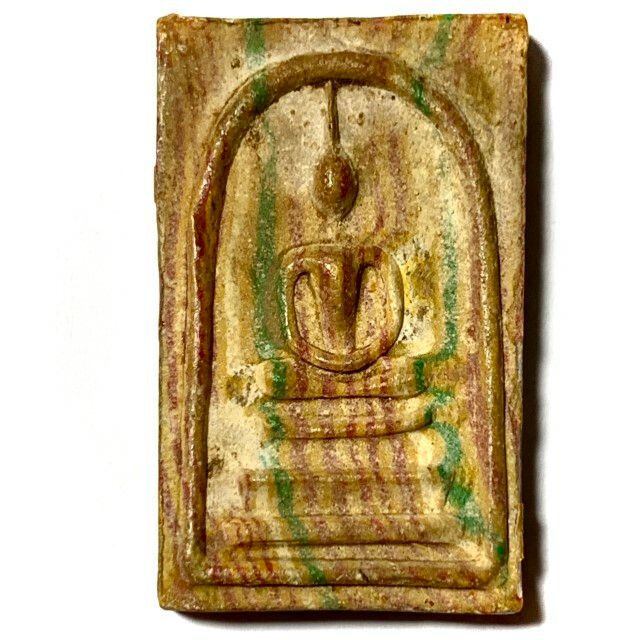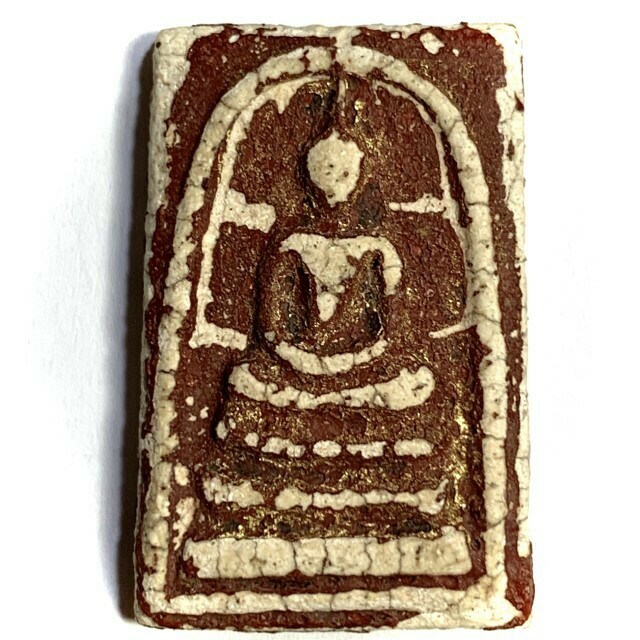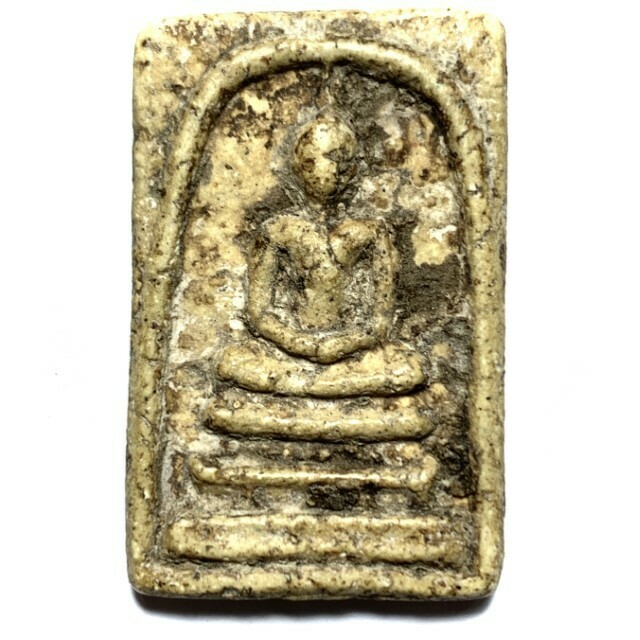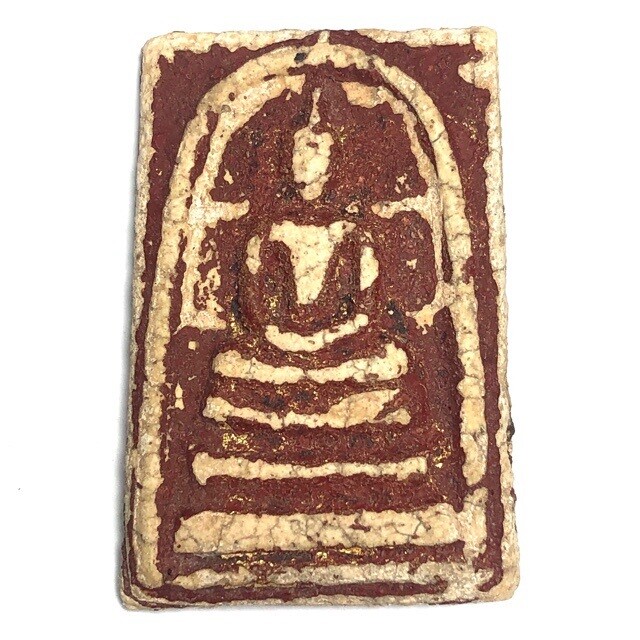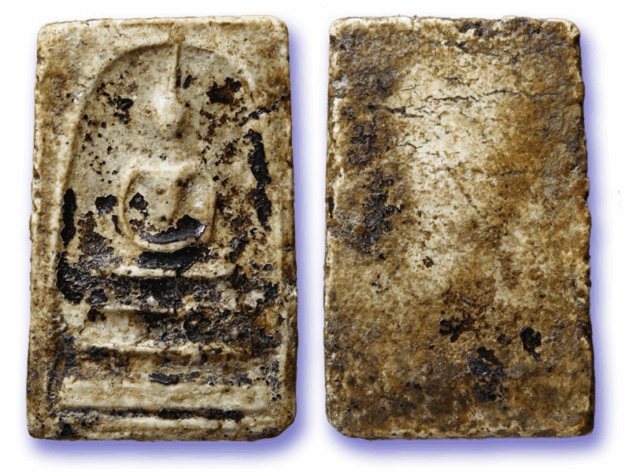
Pra Somdej Wat Bang Khun Phrom: A Priceless Legacy of Buddhist Art and the Legend of Faith
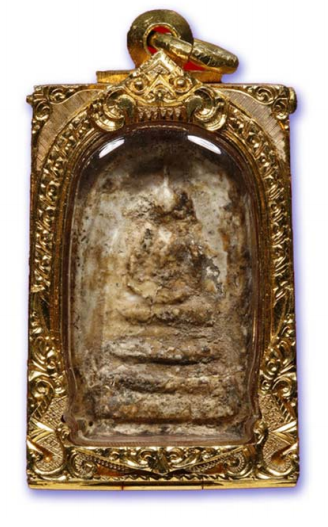 Pra Somdej of Wat Bang Khun Phrom is regarded as a preeminent amulet, long cherished by devotees and connoisseurs of Thai sacred objects. It embodies profound historical significance, sanctity, and artistic beauty, expressed through its unique material composition and archetypal forms.
Pra Somdej of Wat Bang Khun Phrom is regarded as a preeminent amulet, long cherished by devotees and connoisseurs of Thai sacred objects. It embodies profound historical significance, sanctity, and artistic beauty, expressed through its unique material composition and archetypal forms.
The study of Pra Somdej from Wat Bang Khun Phrom is not merely an exploration of a religious artifact, but also an examination of Thai historical consciousness, belief systems, and ancestral wisdom as transmitted through masterful Buddhist artistry.
History and Legend of Wat Bang Khun Phrom
Wat Bang Khun Phrom was originally established during the late Ayutthaya period and was formerly known as “Wat Klang Nam” or “Wat Khlong Bang Khun Phrom,” reflecting its geographic setting, surrounded by waterways, giving it the appearance of an island amid water. During the reign of King Rama III of the Rattanakosin period, the temple underwent a comprehensive restoration under royal patronage and was officially renamed Wat Bang Khun Phrom.
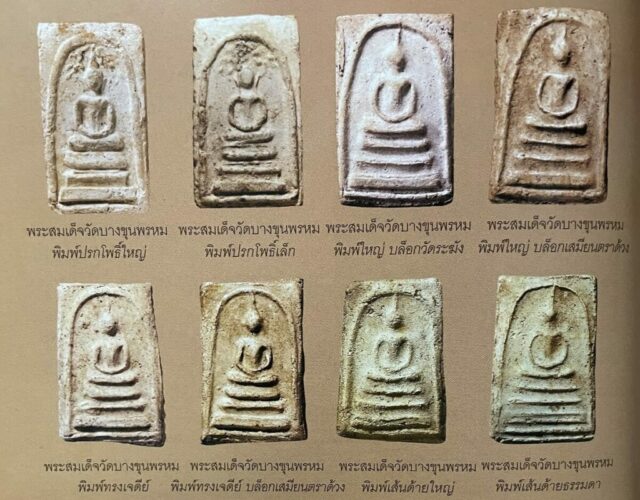
Somdej Pra Phutthachan (To Phrommarangsi), commonly referred to by the laity as “Luang Pho To” or “Somdej To” of Wat Rakhang Kositaram, held a deep spiritual connection to this temple. It is widely believed, through oral tradition, that he once spent a monastic retreat at Wat Bang Khun Phrom and crafted sacred amulets which were then enshrined within the temple’s principal stupa. These amulets later came to be recognized as the revered Pra Somdej Wat Bang Khun Phrom.
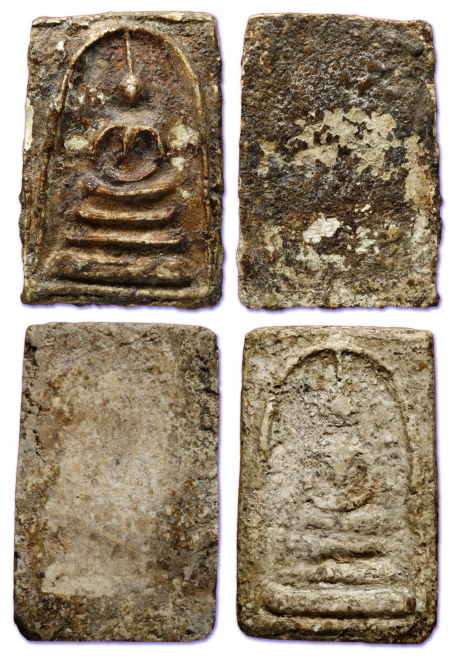
Somdej Pra Phutthachan (To Phrommarangsi) and Pra Somdej
Born in the reign of King Rama I in the year 1788 (B.E. 2331), Somdej To was a venerable monk of great erudition and reputed supernatural power. He was renowned for both his scholarly prowess and meditative discipline. His words were believed to hold mystical potency, and he possessed exceptional skill in the formulation of sacred amulets.
He is credited with crafting amulets for three principal temples:
-
Wat Rakhang Kositaram (his monastic residence)
-
Wat Intharavihara (Wat Satu)
-
Wat Bang Khun Phrom
Historical evidence and oral testimony from village elders support the assertion that Somdej To had a meaningful affiliation with Wat Bang Khun Phrom and that he enshrined amulets within its stupa. Scholars of Thai amulets generally agree that these amulets were likely created between 1846 and 1868 (B.E. 2389–2411), which corresponds to the latter period of Somdej To’s life.
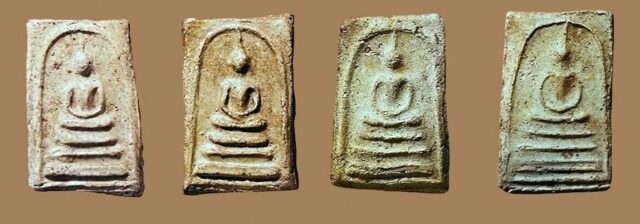
The Discovery of the Wat Bang Khun Phrom Stupa Cache
The discovery of the sacred Pra Somdej amulets at Wat Bang Khun Phrom occurred as a consequence of three major floods in Bangkok, each of which significantly impacted the structural integrity of the temple:
-
The Main Stupa Cache (Old Cache)
In 1901 (B.E. 2444), following a massive flood, the base of the main stupa subsided and cracked. During restoration efforts by monks and local residents, a large quantity of amulets was unearthed beneath the stupa’s foundation. These early Pra Somdej amulets exhibited a weathered metallic texture and were limited in number. Today, they are regarded as highly valuable due to their antiquity and artistic authenticity. -
The Small Stupa Cache (New Cache)
In 1957 (B.E. 2500), another major flood led to the structural collapse of a smaller stupa. Water seeped into the cracks, prompting the then-abbot, Pra Kru Palat Sampipattanawiriyacharn (Luang Pho Phon), to order its dismantling and restoration. This event led to the discovery of approximately 84,000 amulets—now famously referred to as the “2500 Batch.” These amulets form the foundation of the widespread contemporary collection of Pra Somdej Wat Bang Khun Phrom. -
The 1983 Flood
A third inundation in 1983 (B.E. 2526) necessitated further repairs. Although no additional amulets were found, this restoration occasioned a more methodical documentation and scholarly study of the amulets.
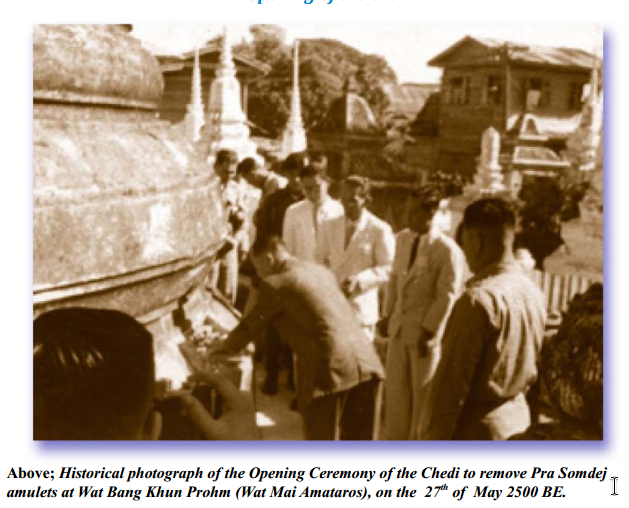
Sacred Composition and Consecration Rituals
The sacred composition (known as muan sarn) of Pra Somdej Wat Bang Khun Phrom is believed to have been a closely guarded formula devised by Somdej To himself. Expert analyses suggest the primary constituents included:
-
Powder from the Bodhi tree (Sri Maha Bodhi) soil in India
-
Ground palm leaf manuscripts used in sacred scripture
-
Animal bone dust—particularly elephant ivory—for structural integrity
-
Cremated bone ash from ancestors, believed to enhance spiritual potency
-
A mixture of 108 traditional Thai herbs (wan 108)
-
Sesame oil, used as a binding agent
-
Honey, also used as a binding agent
-
White clay (din sor phong), the primary filler material
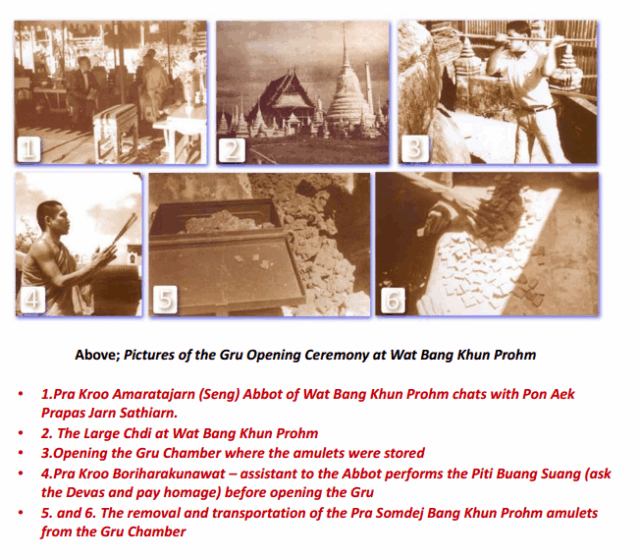
According to ancient scriptures, Somdej To meticulously prepared these materials himself, selecting only the most sanctified substances. The amulets underwent elaborate Buddhist consecration rituals, including prolonged chanting and meditative empowerment. Some accounts state the consecration lasted precisely three years, three months, and three days.

The result was a durable, fine-grained texture that resists crumbling even when submerged in water. The amulets exude a subtle herbal aroma—an authenticating feature often cited by experts.
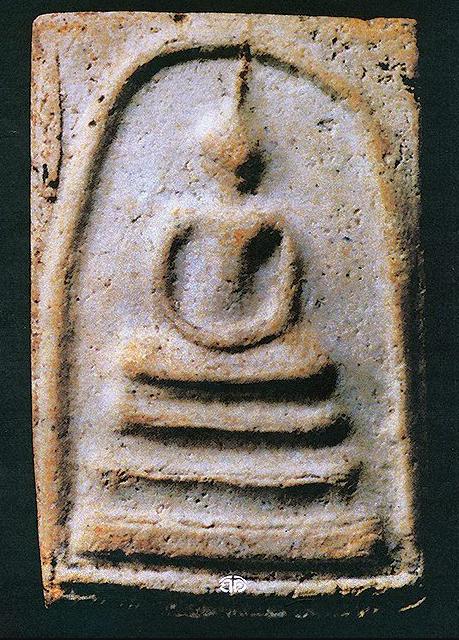
Distinctive Forms (Pim Song) of Pra Somdej Wat Bang Khun Phrom
The amulets are classified into standard and rare forms, each showcasing unique craftsmanship:
Standard Forms:
-
Phim Ok Krut (Garuda Chest) – Distinguished by a raised chest resembling the mythical Garuda or an eagle. Highly rare, with fewer than 100 known specimens.
-
Phim Chedi (Stupa Form) – Characterized by a pointed head reminiscent of a stupa, with elongated robes and tiered base.
-
Phim Yai (Large Form) – Features a proportionally wider face and torso; prevalent in the 2500 Batch.
-
Phim Taengkwa (Cucumber Form) – Exhibits a chubby contour with a rounded face and protruding chest.
-
Phim Jet Chan Nang Phaya (Seven-Tier Queen Form) – Notable for its seven-tiered base, symbolizing royal grace and beauty.
-
Phim Than Saem (Decorated Base) – Features intricate base decorations resembling classic Thai wood carving motifs.
-
Phim Prok Pho (Bodhi Leaf Canopy) – Displays a canopy of Bodhi leaves over the Buddha image.
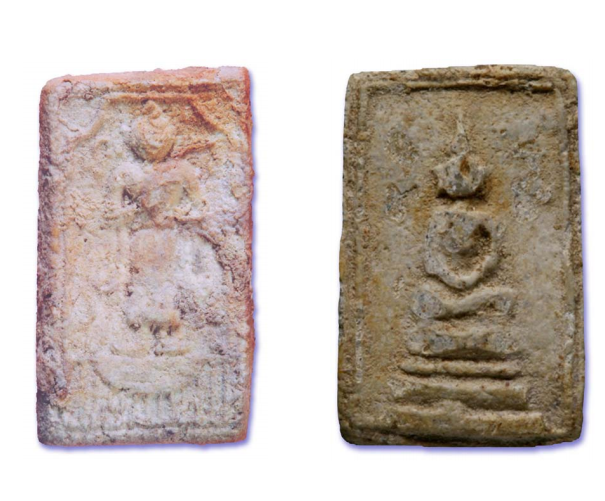
Rare and Unusual Forms:
-
Phim Song Na (Double-Faced) – Depicts Buddha images on both front and back; exceedingly rare.
-
Phim Song Nok (Bird-Like Form) – Resembles a bird perched in repose; very scarce.
-
Phim Hu Bai Si (Ceremonial Leaf Ears) – Ears shaped like the ceremonial bai si leaves used in Thai rituals.
-
Phim Kesa Thalu Sum (Top-Knot Piercing Arch) – The ushnisha extends through the upper arch, forming a dramatic silhouette.
-
Phim Than Khu (Double Base) – Features two distinct horizontal bases.
-
Phim Chan Loi (Floating Moon) – Exhibits a crescent-like curve above the Buddha’s head.
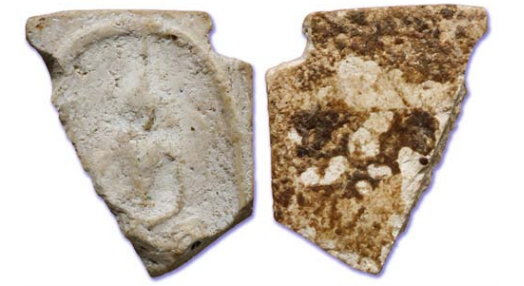
Impact of Floods on the Amulets
Each of the three major floods left unique marks on the amulets:
-
1901 Flood – Resulted in discovery of the earliest batch. Prolonged submersion caused water erosion, leaving “Chediyan” striations—valued markers of authenticity.
-
1957 Flood – Led to the release of the large 2500 Batch. Water interaction created blue-green chemical spots known as “blue dots” (chut fa)—distinctive of genuine amulets.
-
1983 Flood – Did not yield new amulets, but prompted scholarly preservation and cataloging of extant artifacts.
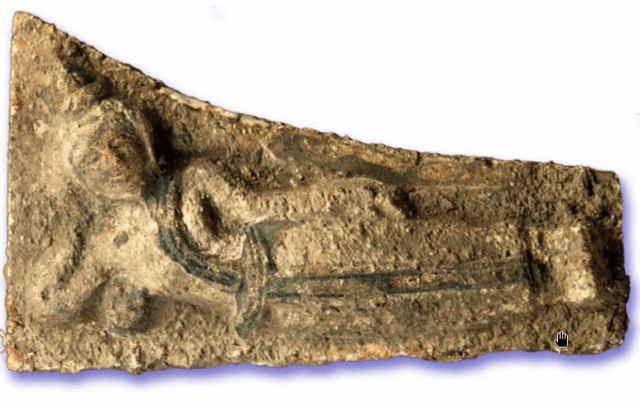
Methods of Authentication:
- Material Texture
- Genuine: Fine, compact, and stone-like under magnification.
- Counterfeit: Often rough, with air pockets or artificial coloration

- Natural Imperfections
- Genuine: Displays naturally formed micro-cracks, blue dots, and water erosion streaks.
- Counterfeit: Manufactured blemishes often look deliberate and repetitive.
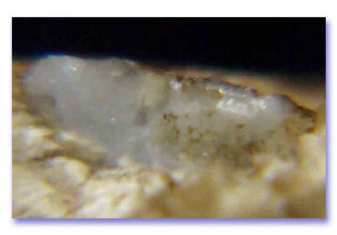
- Form Precision
- Genuine: Crisp, proportionate, and reflective of early Rattanakosin artistry.
- Counterfeit: Often malformed, over-detailed, or misaligned.
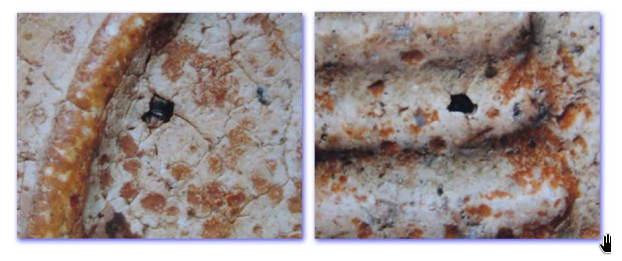
- Weight
- Genuine: Consistent and proportionate to form.
- Counterfeit: Frequently too light or heavy due to improper materials.
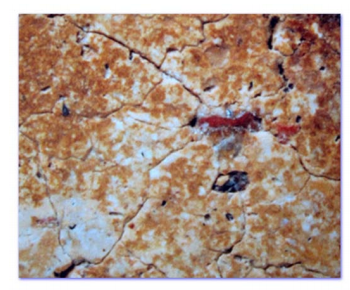
- Physical Testing
- Water: Genuine amulets do not dissolve and may release minute air bubbles.
- Sound: Genuine amulets produce a resonant, high-pitched ring when tapped.
- Ultraviolet Light: Genuine pieces exhibit little to no fluorescence, unlike modern forgeries.
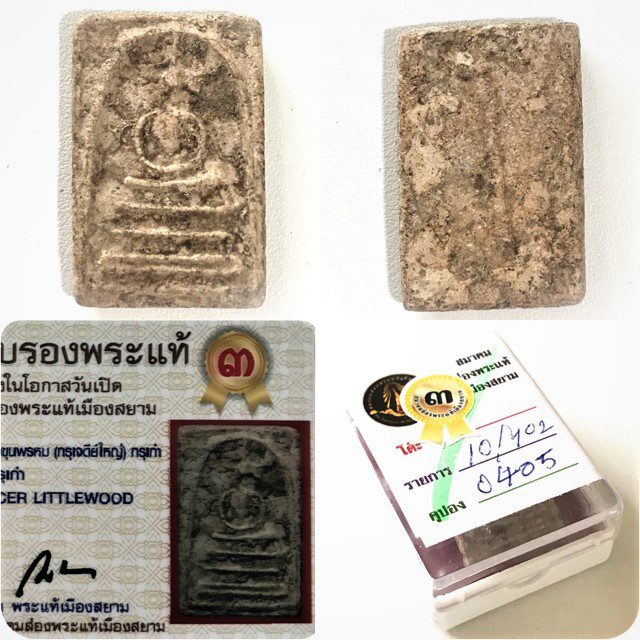
Pra Somdej Bang Khun Prohm Pim Sen Daay Kru Gao 3rd Prizewinner Ancient Benjapakee Amulet
Phenomena of “Blue Dots” and “Chediyan”
“Blue Dots” are chemical formations of copper carbonate resulting from long-term exposure to moisture and air. This phenomenon, confirmed through scientific analysis by Professor Dr. Tharapong Wititsarn of Chulalongkorn University, is difficult to replicate artificially.
“Chediyan” are striated erosional patterns formed by water seepage in the old cache amulets, creating ripple-like impressions reminiscent of draped fabric.

Art Historical and Archaeological Value
Pra Somdej Wat Bang Khun Phrom is not only an object of spiritual reverence but also a distinguished example of early Rattanakosin Buddhist art. From an archaeological standpoint, the study of these amulets offers vital insight into materials, craftsmanship, and religious symbolism of the era, reflecting the beliefs, technology, and artistry of the period.

Legends and Miraculous Powers
Numerous legends attest to the supernatural efficacy of these amulets:
-
Protective Miracles – Devotees reportedly survived grave accidents unscathed.
-
Charismatic Influence – Believers claim enhanced likability and commercial success.
-
Fortune and Wealth – Several reports link amulet possession to lottery winnings.
-
Home Protection – Homes displaying the amulet are said to repel intruders.
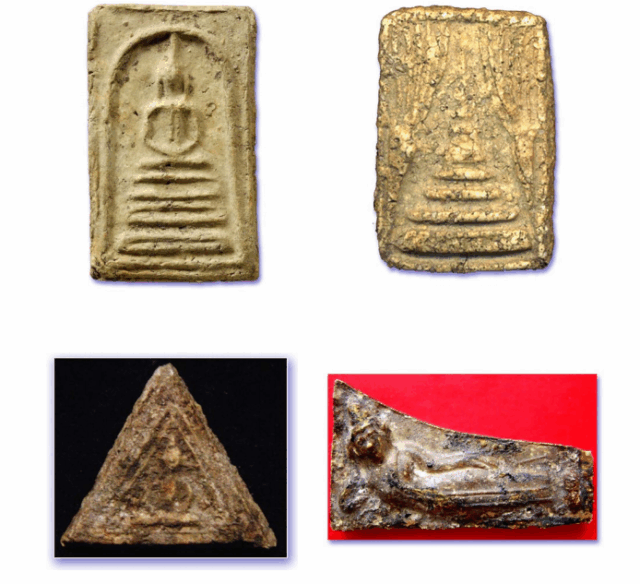
Pra Somdej in Contemporary Context
Today, Pra Somdej Wat Bang Khun Phrom remains a staple in Thai amulet culture, featured in exhibitions and competitions. Rare exemplars command multi-million-baht valuations. The Thai Amulet Collectors Association recognizes it as one of the top-tier amulets, supporting scientific authentication and digital preservation efforts. Its international recognition is growing through translated literature and online dissemination.
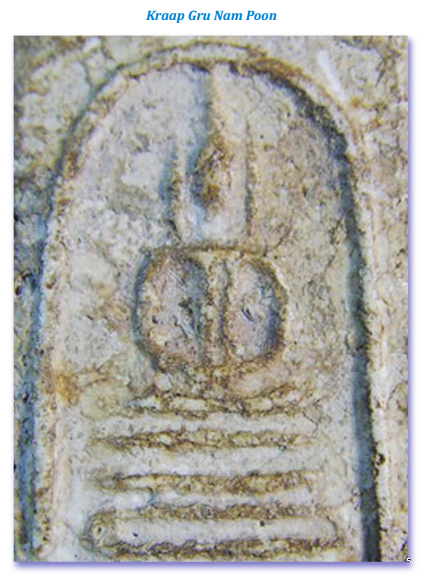
The Pra Somdej Wat Bang Khun Phrom Thai Buddhist Votive Tablet,represents a cultural legacy of immeasurable worth. Its study enriches our understanding of Thai spiritual heritage, artisanal wisdom, and cultural continuity. The amulet’s value lies not only in its economic worth but in its embodiment of faith, artistic achievement, and philosophical depth. Preserving and propagating this knowledge honors the craftsmanship of the ancestors and ensures that Pra Somdej Wat Bang Khun Phrom remains an enduring emblem of Thai devotion and artistry.
Pra Somdej

